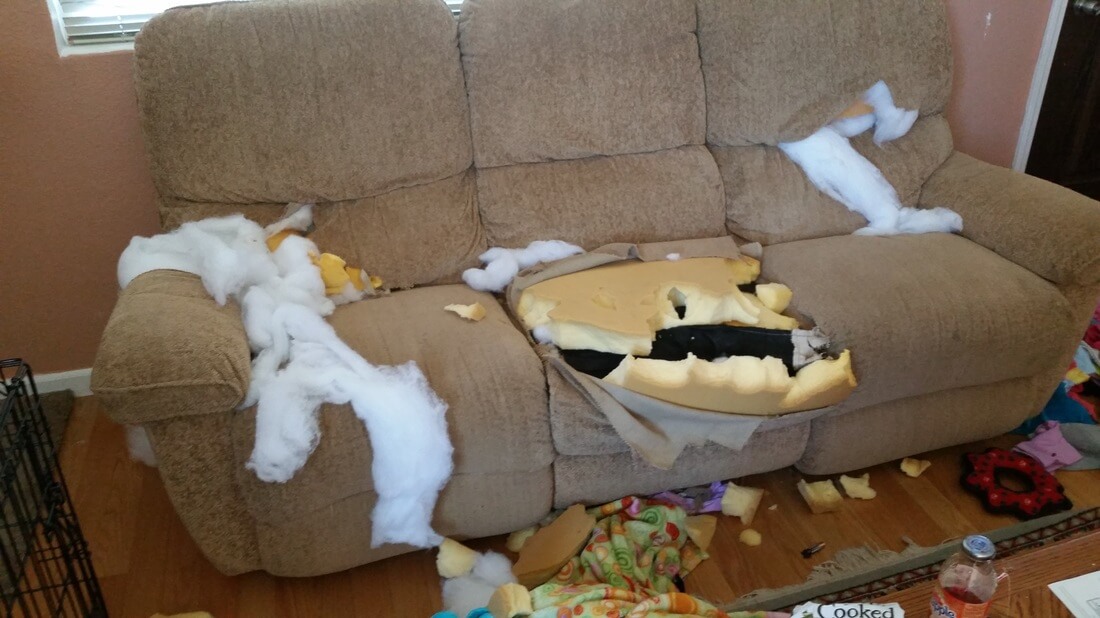Imagine coming home to this...

This is the result of a "forgetful" owner (Kristina's boyfriend) forgetting to put their dog in the crate while they were at work. In addition to eating the couch, he also chewed the TV remote, some kid toys, and a bag of clothes that were supposed to go to Goodwill for donation. Strangely, he ignored the chips that were left on the coffee table right next to the half eaten couch. Silly dog.
?Kristina rushed him to Animal Hospital, worried that he may have ingested a battery from the TV remote. Radiographs showed a full stomach, possibly full of foam from the couch; fortunately, there were no signs of a battery. The next day, Bruiser was luckily able to pass a lot of yellow foam, and some small buttons from the TV remote.

Crate training can help with house training and can prevent destructive chewing when you are not at home. A crate can also act as your dog's "safe spot," a place where they can find comfort to sleep, and feel safe and secure. Also, if a dog is injured, or has surgery, it will often be recommended that they be in a crate to restrict their activity while they recover, so it is very helpful if they are used to the crate already.
Choosing the right crate
- Several types of crates are available, including plastic crates (good for traveling), soft fabric crates, and collapsible metal crates.
- The crate should be large enough for them to stand up and turn around in. If you are getting a crate for a growing puppy, choose a crate size that will accommodate their adult size.
Crate training tips
- The training process could take days or weeks depending on your dog's temperament and past experiences. Approach crate training gradually.
- Crate training should always be associated with something pleasant, and a lot of patience. A good way to start is to give treats or meals in the crate, with the door open.
- Avoid using the crate as punishment, as your dog can come to fear it and refuse to enter. Instead, the crate should be a space where they feel safe and secure.
For more information, visit The Humane Society's page about crate training.
